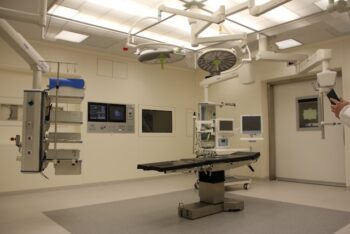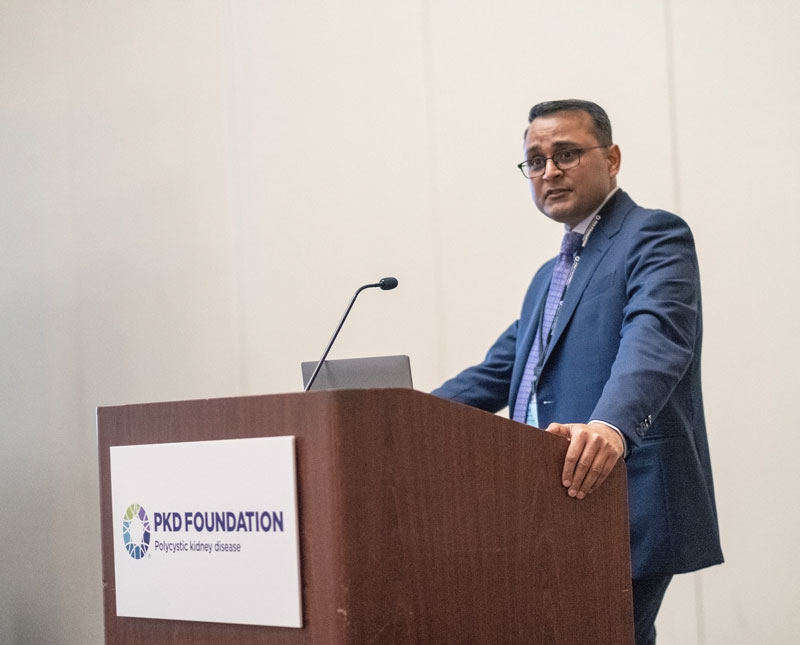resources
Understanding Robotic Bilateral Nephrectomy
18 June 2024

Published on June 18, 2024 | Patients with polycystic kidney disease (PKD), may know the surgical procedure, bilateral nephrectomy. A surgical procedure to remove both kidneys. But have you heard of robotic bilateral nephrectomy?
Traditionally, a bilateral nephrectomy is done through open surgery or laparoscopy. However, significant advancements in robotic bilateral nephrectomy show potential benefits, such as reduced blood loss, shorter hospital stays, and fewer complications.
In 2023, Amit Gupta, M.D., authored a paper explaining the technique and clinical experiences with robotic bilateral nephrectomy in patients with autosomal dominant polycystic kidney disease (ADPKD).

Understanding Nephrectomy
Historically, bilateral native nephrectomy has been a challenging procedure for patients with ADPKD, sometimes associated with significant blood loss, complications, and long hospital stays. Due to these risks, the timing and necessity of this surgery have been debated among healthcare professionals. Some suggest minimizing open native nephrectomy whenever possible and using alternative methods such as laparoscopy.
While minimally invasive laparoscopic techniques can improve outcomes, they also have limitations, especially for extremely large kidneys. These limitations include longer operating times and a higher likelihood of converting to open nephrectomy.
The Case for Robotic Bilateral Nephrectomy
In the paper, Dr. Gupta details a robotic technique for simultaneous bilateral nephrectomy using the Da Vinci Xi and Single Port systems. The study authors also reviewed 14 cases (from January 2020 to present) that used this technique. They looked at several data points, including:
- Blood loss during surgery
- Transfusion rate
- Surgical complications
- Length of Stay
- Time from nephrectomy to transplant
Advantages and Conclusions
Through the robotic approach, doctors saw decreased blood loss (median 75 cc), short hospital stays (median three days), and low complication rates compared to open and laparoscopic techniques. Even large polycystic kidneys experienced successful procedures, with the largest removed kidney measuring 32 cm. Despite the large size of many polycystic kidneys, no case required pivoting to open nephrectomy.

“Robotic nephrectomy should be the standard of care for PKD patients and made accessible to all.”
—Amit Gupta, M.D., Beverly Hills Urology
A robotic bilateral nephrectomy may be a promising option for ADPKD patients needing native nephrectomy. Even for significantly enlarged kidneys, it might allow for an alternative, minimally invasive approach. Ultimately, the timing and necessity of bilateral native nephrectomies for ADPKD should be tailored to each patient’s individual needs in close consultation with their care team.
Interested in learning more? Check out all our content on nephrectomies and the PKD treatment pipeline.
Related Resources

- ADPKD
- ADPKD Registry
- Clinical Trials
- Drug Therapy and Treatments

- Advocacy
- Clinical Trials
- Conference
- Drug Therapy and Treatments
- PKD News
- Research
- TKV
- Total kidney volume

- ADPKD
- Drug Therapy and Treatments
- Management
- Podcast
- Tolvaptan
- Treatment

- 2025
- ADPKD
- Complications
- Living with PKD
- Polycystic Liver Disease
- Webinar

- 2025
- ADPKD
- Caregivers
- Complications
- Education
- Living with PKD
- Newly Diagnosed
- Polycystic Liver Disease
- Symptoms
- The Basics of PKD
- Webinar

- 2025
- ADPKD
- Caregivers
- Complications
- Diagnosis
- Education
- genetic testing
- genetics
- Living with PKD
- Newly Diagnosed
- The Basics of PKD
- Webinar

- 2023
- ADPKD
- PKD
- Progression
- Webinar

- 2023
- ADPKD
- ARPKD
- Children
- Healthcare
- Healthcare Team
- PKD Parents
- Teens and Young Adults (13-20)
- Webinar





